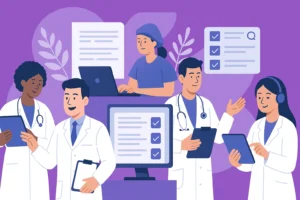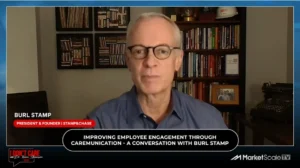Medical emergencies aren’t frequent at a physician’s office. But they are always possible, and studies show they are not rare. Yet there is no national standard or requirement for primary care physicians relating to emergency medical preparedness.
The good news is that the American Academy of Family Physicians (AAFP) offers three principal recommendations for preparing for the most common medical emergencies. To create or improve your practice’s medical emergency preparedness plan:
- Assess your particular situation
- Consider your staff’s skills and training
- Create a procedure for managing emergencies
Understanding Potential Emergencies
According to the AAFP, the five most common emergencies at a physician’s office are asthma attacks, seizures, anaphylaxis, cardiac arrest/chest pain, and hypoglycemic episodes. Shock is also frequent, though less life-threatening. Unfortunately, studies suggest that most general practitioners’ offices are not adequately equipped or prepared to handle these potentially life-threatening situations.
Three Factors Determine Your Medical Emergency Readiness
As a best practice, doctor’s offices should be prepared for medical emergencies. Readiness requires the right training, medications and supplies at all times. Start by understanding your practice’s needs, using this AAFP guidance.
Analyze Your Circumstances
Equipment and medication for your emergency medical kit should reflect your patients’ (and their families’) characteristics and your office location. For instance, is your office’s patient population largely children (thus the need for pediatric medication dosage and child-appropriate devices)? Does your office cater to the elderly or chronically ill (where it’s more likely you’ll need to provide cardiac support)?
What is your proximity to the nearest hospital or emergency department? Offices located more than five miles from an emergency aid unit (where emergency response time more than doubles from urban areas) should be prepared to manage serious incidents for prolonged periods of time.
Rural practices should evaluate readiness for longer response times. That means being trained and prepared for advanced airway management, having sufficient quantities of emergency oxygen, and being up-to-date with trauma supplies.
Consider Your Skills
Properly trained team members can make a life-or-death difference. What is your staff’s level of training? Will additional training be required to accommodate potential emergencies? Team members must capably use equipment and administer medication properly. Can your personnel manage the most common side effects to drugs administered onsite? How a primary care office is equipped should be dependent upon the physicians’ and nurses’ skills and certifications in basic or advanced life support courses.
Prepare and Test Your Plan
Use the findings in the first two areas to create an emergency response procedural plan. Staff members should know your plan’s specific procedures. To increase staff confidence and improve performance when responding to medical emergencies, consider a “mock code” simulation to assess your plan, supply readiness, reaction times, and staff abilities. Ensure supplies are portable and easily accessible to staff.
Be Ready with Emergency Drugs and Equipment
For any plan to work, you should have easily accessible, up-to-date basic emergency drugs and equipment. Basic medications for the most common life-threatening emergencies are:
- Epinephrine: Used to treat anaphylaxis resulting from severe allergic reactions
- Albuterol: For an asthmatic attack
- Diphenhydramine: Used to treat non-life-threatening allergic reactions
- Aspirin: Administered as part of the MONA protocol when myocardial infarction is suspected.
- Nitroglycerin: Coronary vasodilator used to provide relief from angina.
- Glucose: Used to treat diabetes or hypoglycemic patients
- Naloxone: Used to reverse the effects of opioids.
Be sure to replace emergency medications before their expiration dates to meet patient safety and FDA recommendations. An auto-replenishment system such as Banyan’s OnTraq program tracks the expiration dates of emergency medications and supplies in your emergency medical kit or crash cart and prompts replacement shipments prior to their expiration.
Turn to Banyan for Medical Emergency Preparedness
With planning, training and the right medications and equipment, offices can easily prepare for the emergencies they may encounter. Banyan can help. Guided by a medical advisory board which includes physicians that specialize in medical emergency management, Banyan offers practice-specific emergency medical equipment and medications to enable accurate life-saving responses. Contact us at 888-782-8548 or visit statkit.com.
Read more at statkit.com









